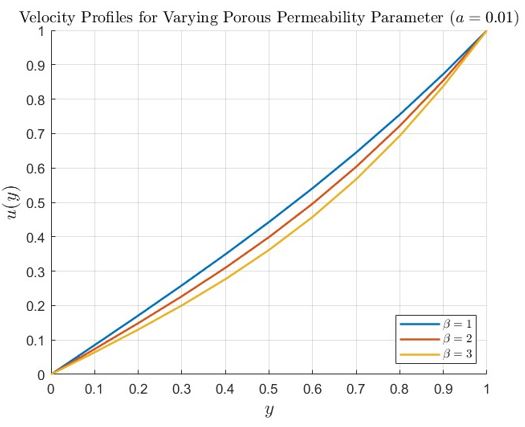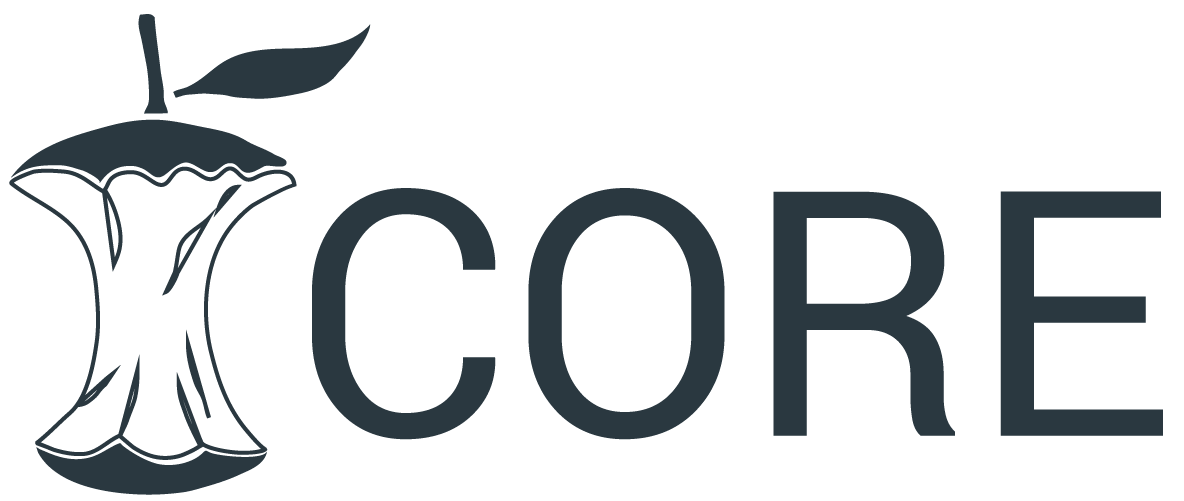Flow Analysis of a Couple Stress Fluid Through Porous Media in the Absence of a Pressure Gradient
DOI:
https://doi.org/10.5281/zenodo.15545269Keywords:
fluid, pressure, entropy, thermodynamicsAbstract
This study investigates the steady flow of a chemically reacting couple-stress fluid through a porous medium without an imposed pressure gradient. Using the second law of thermodynamics, we analyze entropy generation and thermal irreversibility in the system. The higher-order differential equations that govern the flow, incorporating couple stresses and porous permeability effects, are non-dimensionalized and simplified to obtain approximate analytical solutions. Key parameters such as the stress parameter of the couple and the permeability of the porous medium are examined to determine their influence on flow behavior and the rates of entropy generation. The results provide insights relevant to the optimization of heat and mass transfer in complex fluid systems with applications in chemical and thermal engineering.
Downloads
References
M. A. Hassan, & M. N. K. Khan. (2017). Entropy generation analysis of couple stress fluid in a porous medium. International Journal of Heat and Mass Transfer, 108, 1823–1830.
S. Chen, & H. Hsin. (2010). Thermodynamic irreversibility and entropy generation in couple stress fluid flow through porous media. Applied Mathematical Modelling, 34, 1637–1645.
A. Ariel, & T. Aranda. (2006). On the flow of couple stress fluids in porous channels. Journal of Non-Newtonian Fluid Mechanics, 136, 95–101.
J. Kwanza, & P. Sharma. (2003). Entropy generation minimization in thermal systems: An overview. Energy Conversion and Management, 44, 1585–1603.
T. R. Mahapatra, & S. Roy. (2003). Entropy generation in non-Newtonian fluid flows: A review. International Journal of Heat and Fluid Flow, 24, 185–194.
P. Choudhury, & R. Gupta. (2006). Couple stress effects in porous flows. International Journal of Engineering Science, 44(7), 567–578.
J. G. Oldroyd. (1950). On the formulation of rheological equations of state. Proceedings of the Royal Society, A, 200, 523–541.
S. Shateyi, & F. Mabood. (2003). Entropy generation in couple stress fluid flows through porous media. Chaos, Solitons and Fractals, 15, 665–673.
R. Singh. (2002). Effects of chemical reaction and magnetic field on couple stress fluid flow in porous channels. International Journal of Engineering Science, 40, 895–905.
J. L. Andrieko. (2000). Fluid Dynamics in Porous Media. (2nd ed.). New York: Springer.
S. O. Adesanya, & O. D. Makinde. (2013). Entropy generation and convective heating effects in couple stress fluid flow through porous channels. Applied Mathematical Modelling, 37, 7383–7395.
A. O. Eegunjobi, S. O. Adesanya, & O. D. Makinde. (2013). Thermal and entropy generation analysis of couple stress fluid flow through a porous medium. Thermal Science, 17, 1203–1214.
M. I. Ahmed, & H. A. Shehzad. (2008). Flow of couple stress fluids through porous media with thermal radiation and chemical reaction. Communications in Nonlinear Science and Numerical Simulation, 13, 2601–2612.
S. O. Adesanya, & O. D. Makinde. (2015). Convective heat transfer and entropy generation in couple stress fluid flows in porous channels. International Journal of Numerical Methods for Heat & Fluid Flow, 25, 376–393.
J. D. Anderson Jr. (1995). Computational fluid dynamics: The basics with applications. New York: McGraw-Hill.
F. Alcocer, & J. Smith. (2002). Effects of porous media on fluid flow. Journal of Fluid Mechanics, 456, 123–145.
T. Hayat, M. Sajid, & S. Asghar. (2002). Exact solutions for couple stress fluid flows through porous media. International Journal of Engineering Science, 40, 1059–1074.

Published
How to Cite
Issue
Section
ARK
License
Copyright (c) 2025 Joshua O Oladele

This work is licensed under a Creative Commons Attribution 4.0 International License.
Research Articles in 'Applied Science and Biotechnology Journal for Advanced Research' are Open Access articles published under the Creative Commons CC BY License Creative Commons Attribution 4.0 International License http://creativecommons.org/licenses/by/4.0/. This license allows you to share – copy and redistribute the material in any medium or format. Adapt – remix, transform, and build upon the material for any purpose, even commercially.










